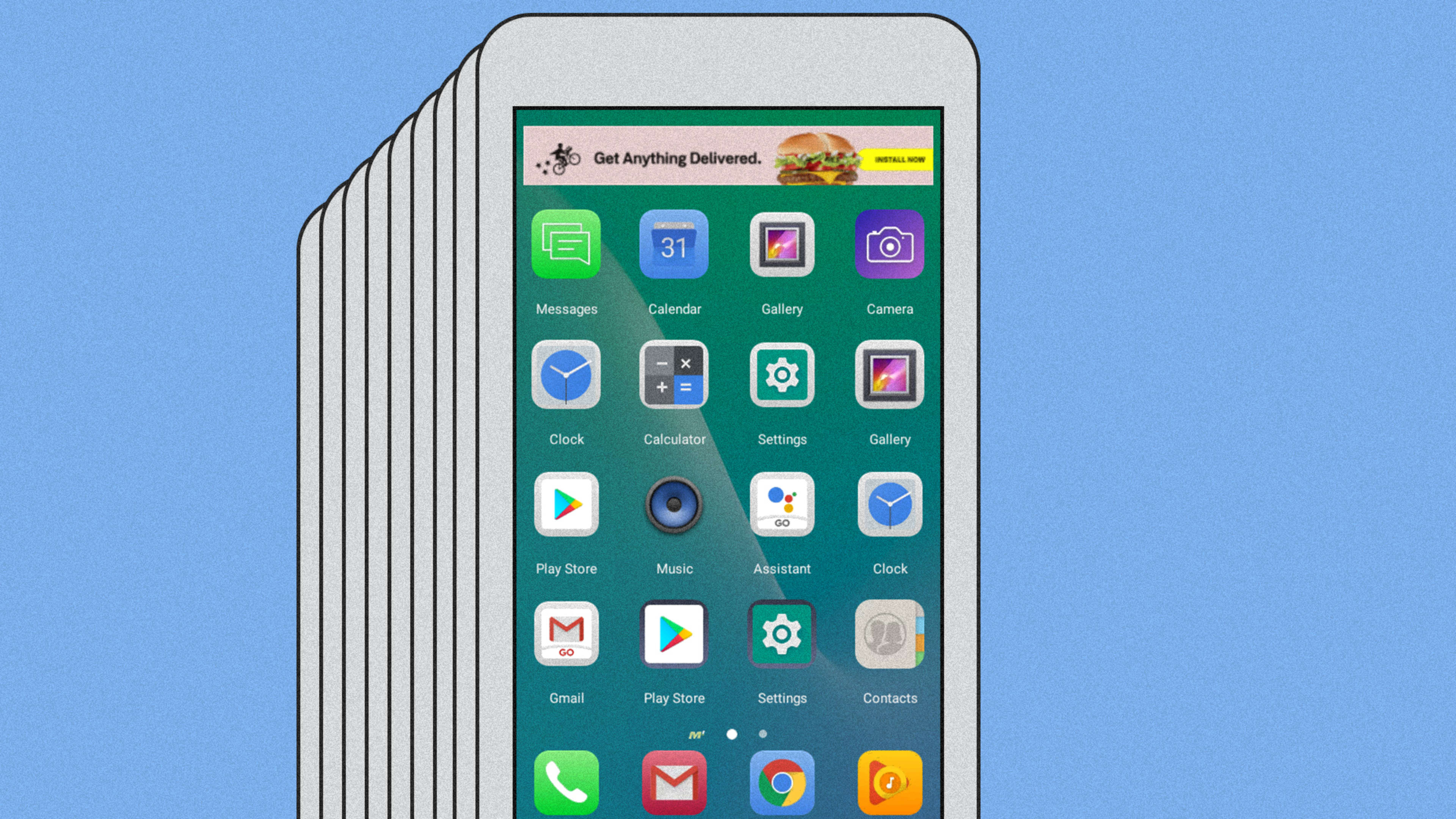For a family struggling to survive on minimum wage, paying monthly bills can sometimes mean not having enough money for groceries. Around 50 million American households can’t afford a basic budget for rent, food, childcare, healthcare, transportation, and a phone bill–so every month involves creative juggling of expenses. A new program was created to help with one particular bill: In exchange for looking at ads on their phones, low-income consumers can get free cell phone data.

The basic premise is simple: On the Android phones that Surge provides–or on an existing phone using a SIM starter kit–Moolah Mobile’s app shows ads on the home screen, and consumers share in the revenue from the ads. “You choose the home screen that you’d like and then ads rotate,” Woods says. “So you’ll see a different ad very frequently. Each time that you see an ad, you’re paid in ‘moolah,’ and you’re paid in real time.” In the partnership with Surge, the ad revenue goes to cover the monthly phone bill, but any extra money can also be used to make purchases elsewhere, such as Amazon. Moolah’s app is designed to work with prepaid wireless service from other providers as well, though Surge is the first to integrate the technology directly into a plan and offer autopay.

Woods first started thinking about the challenge of phone bills when talking with a company that works with a federal program called Lifeline that helps low-income consumers get a discount on phone service. “They were trying to figure out a different way to subsidize the cost of phones,” he says. The concept of using ads to pay for phone service isn’t new. In India, for example, one startup uses ad revenue to offer free mobile data. Others have experimented with options in the U.S. for several years, Woods says, though they had struggled to figure out how to deliver those ads effectively.
“The difficult part that we found–and why it’s taken us a couple of years to really get the product right–is that it can’t alter the user’s behavior,” he says. “If it alters that it’s going to impact their everyday usage of the phone, which is going to make the cost of ads so much higher. What we’re doing that’s different is simply giving you a custom home screen…We’re ensuring that users are seeing it, but it’s not changing the way that they typically use their phone or how they experience their phone, so they’re telling us it’s a lot less invasive.”
After a couple of years of beta testing, the partnership with Surge is the startup’s first major launch. The service will be available first in Florida, Georgia, Texas, and Virginia, and will then expand, with a goal of reaching 40,000 locations by the end of 2019.
Recognize your brand’s excellence by applying to this year’s Brands That Matter Awards before the early-rate deadline, May 3.
